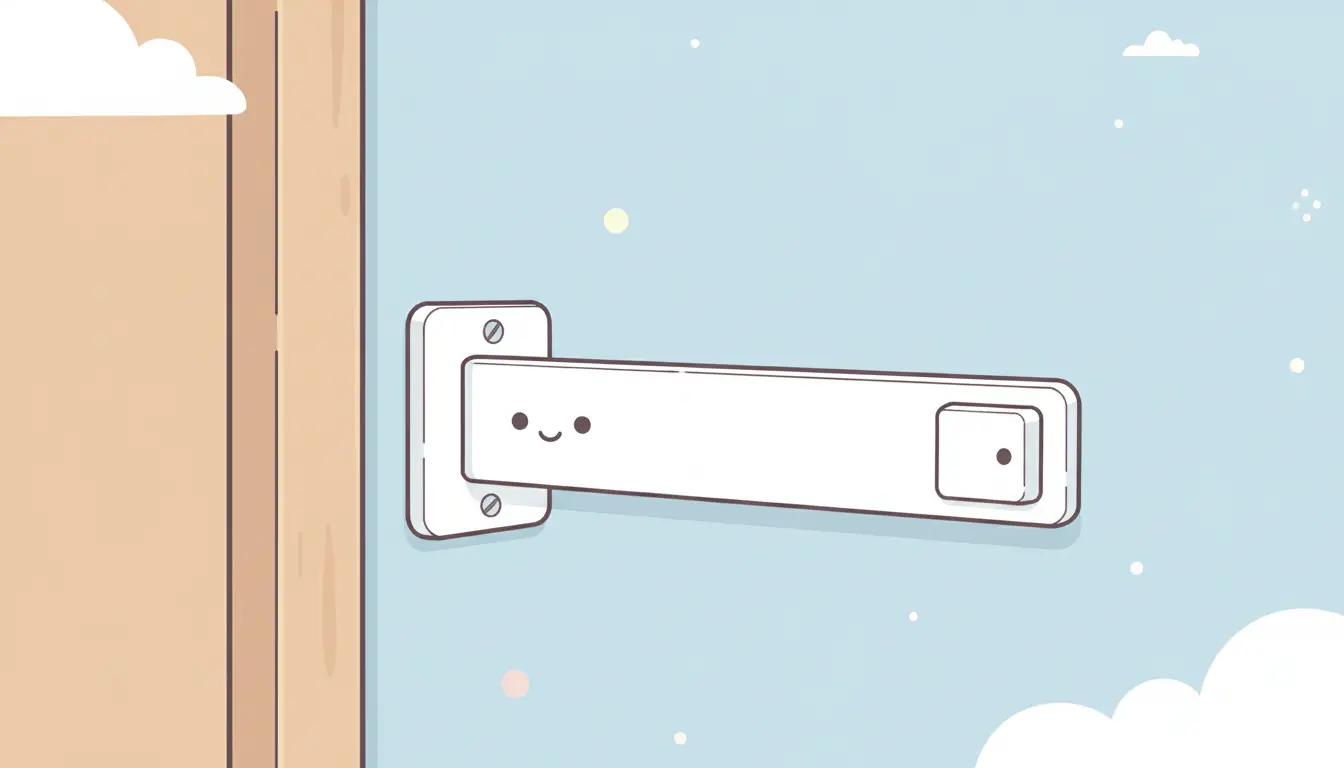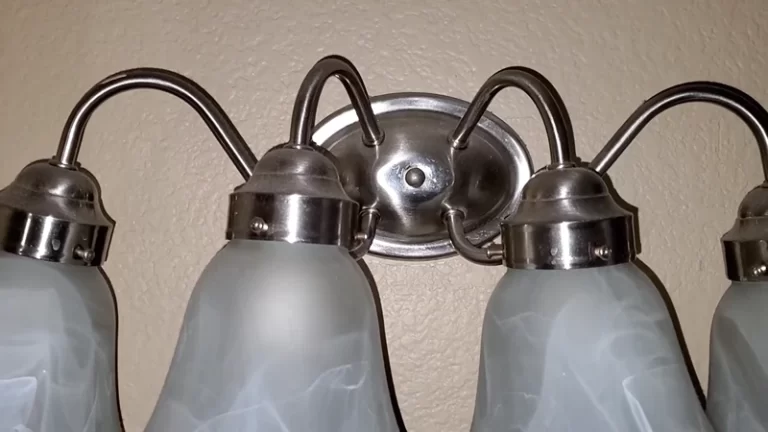Light Switch Extender Sideways: Your Genius Fix for Blocked Switches
It’s a frustratingly common scenario in many homes. You rearrange the furniture, bring in a beautiful new bookcase, or install a stylish barn door, only to realize you’ve completely blocked a critical light switch. Suddenly, plunging a room into darkness or light requires a clumsy reach behind heavy objects, a task that quickly goes from a minor annoyance to a daily frustration.
This problem isn’t just about convenience; it can be a matter of safety and accessibility. Before considering the expensive and messy process of hiring an electrician to move the entire switch, there is a remarkably simple, effective, and affordable solution: the light switch extender sideways.
You'll Learn About
What Exactly Is a Sideways Light Switch Extender?
A sideways light switch extender is a purely mechanical device designed to relocate the point of operation for a light switch without any electrical work. Think of it as a simple remote control for your existing switch. It consists of a base plate that fits over your current switch and a connected, slim housing that you can place several inches to the side.
A simple internal mechanism, often a sliding bar or lever, connects the new, accessible switch to the old one. When you flip the new switch, the mechanism transfers that motion to the original switch, turning the lights on or off. It’s an ingenious solution that requires no wiring, no drywall cutting, and typically, no more than a screwdriver to install.

When Do You Absolutely Need a Sideways Extender?
The applications for this simple device are surprisingly vast, addressing numerous common household pain points. From newly purchased furniture to home improvement projects, an inaccessible switch can appear when you least expect it.
Furniture Blockades: The Most Common Culprit
This is the classic scenario. You’ve found the perfect spot for a tall bookshelf, a large headboard, an entertainment center, or a china cabinet. Unfortunately, that perfect spot happens to be directly in front of a light switch. A sideways extender allows you to move the control point to the edge of the furniture, restoring easy access without compromising your room’s layout.
Architectural Obstructions: Doors, Trim, and More
Home renovations and updates can often lead to switch accessibility issues. A new door might swing open to cover a switch, or the installation of thick, decorative trim around a doorway can make a switch awkward to reach. In older homes, switch placement can seem entirely random, landing in impractical locations that are easily fixed with an extender.
Even decorative projects can cause trouble. For instance, when installing wainscoting on plaster walls, the added thickness and top rail of the paneling can partially obstruct a low-lying switch. An extender can effortlessly bring the switch control up and away from the new woodwork.
Accessibility and Safety Concerns
Beyond convenience, extenders serve a vital role in home accessibility. For children, they can bring a high switch down to a reachable level, fostering independence. For individuals in wheelchairs or with limited mobility, an extender can move a switch from a hard-to-reach location to a more convenient and accessible one, making daily life significantly easier.
The Alternatives: Exploring All Your Options
While a sideways extender is often the best solution, it’s wise to understand the alternatives. The main competitors are a full electrical rewiring or embracing smart home technology. Each has its own set of pros and cons regarding cost, difficulty, and permanence.
| Solution | Average Cost | Installation Difficulty | Best For |
|---|---|---|---|
| Sideways Light Switch Extender | $15 – $30 | Very Easy (DIY) | Quick, non-permanent fixes for blocked switches; renters; improving accessibility. |
| Relocating & Rewiring | $150 – $400+ | Difficult (Requires Electrician) | Permanent solutions during major renovations; when the new location is far from the old one. |
| Smart Switch or Smart Bulbs | $25 – $70 per switch/bulb | Easy to Moderate (DIY) | Tech-savvy users who want voice/app control and are willing to rely on a Wi-Fi connection. |
The Costly Solution: Relocating and Rewiring
This is the traditional, and most invasive, approach. It involves hiring a licensed electrician to physically move the electrical box. The process requires cutting into the drywall, running new wires, installing a new box, patching the old hole, and then repainting. It’s a costly, messy, and time-consuming project best reserved for major home renovations.
The Tech-Savvy Fix: Smart Switches and Bulbs
Smart technology offers a wireless way to bypass a physical switch. By installing a smart switch or smart bulbs, you can control your lights via a smartphone app, a smart home hub, or voice commands. While convenient, this solution is more expensive, requires a stable Wi-Fi network, and may involve a more complex setup. It also doesn’t provide a simple, physical switch in a new location, which many people still prefer.
Choosing the Right Sideways Light Switch Extender
Not all extenders are created equal. To ensure you get the right product for your needs, consider the type of switch you have, the material of the extender, and the configuration of your switch box.
Understanding Switch Types: Toggle vs. Decora (Rocker)
The two most common types of light switches are the traditional toggle switch (the small, flipping lever) and the modern Decora or rocker switch (the large, flat panel). Most extender kits are designed for one type or may come with adapters to fit both. Always check the product description to ensure compatibility with your specific switch style.
Material and Design Considerations
The vast majority of sideways extenders are made from durable white plastic, designed to blend in with standard switch plates. Some are paintable, allowing you to match your wall color for a more seamless look. For a more premium option, magnetic extenders are available, which use magnets to create a sleek, modern-looking remote switch that can be placed on any nearby surface.
Single-Gang vs. Multi-Gang Setups
Most extenders are designed for a standard single-gang box (a box containing just one switch). If your blocked switch is part of a multi-gang plate with two, three, or more switches, finding a compatible extender can be more challenging. In these cases, a smart switch or careful selection of a specialized multi-gang compatible extender may be necessary.
Step-by-Step Guide: Installing Your Sideways Light Switch Extender
One of the biggest advantages of a sideways extender is the incredibly simple installation process. In most cases, it takes less than 10 minutes and only requires a basic screwdriver.
Before You Begin: Safety First!
Although you won’t be touching any wires, it is always a best practice to turn off the power to the switch at your circuit breaker before starting any work on an electrical fixture. This eliminates any risk and ensures a completely safe installation.
Step 1: Removing the Existing Switch Plate
Using your screwdriver, carefully remove the small screws holding your existing switch plate to the wall. Set the plate and screws aside. This is a good moment to inspect the area; if you notice issues like a warped plate, it might be a symptom of other problems. Sometimes, this is related to why outlet covers are bending, which can be caused by pressure or heat.
Step 2: Attaching the Extender’s Base Plate
Your extender kit will come with a new base plate that fits directly over the exposed switch. It will have an opening for the toggle or rocker and will use the same screw holes as the switch itself. Simply place it over the switch and secure it using the longer screws provided in the kit.
Step 3: Positioning the Extension Box
Determine where you want the new, accessible switch to be located. Most extenders offer a range of about 6 to 12 inches from the original switch. The extension housing is typically attached to the wall with strong, pre-applied adhesive strips, though some models may offer the option of using small screws for a more permanent mount.
Step 4: Connecting the Actuator and Final Cover
With the base and extension box in place, the final step is to attach the cover that houses the mechanical slider. This piece will snap or screw into place, connecting the new switch lever to the mechanism that operates the old switch.
Step 5: Testing and Final Adjustments
Once everything is assembled, you can restore power at the circuit breaker. Test the new switch to ensure it operates the light smoothly. The action should feel secure and definitive, turning the light fully on and off with each flip.
Advanced Problems and Creative Solutions
While most installations are straightforward, you might encounter some unique challenges. With a bit of creativity, most of these can be easily overcome.
Dealing with Uneven Surfaces
What if your wall isn’t perfectly flat? This can be an issue with textured plaster, brick, or tile. When the surface is uneven, getting the adhesive on the extension box to stick securely can be difficult. This is similar to the challenge of fitting outlet covers for uneven backsplash; the key is ensuring a flush mount. For a secure bond on a rough surface, you may need to supplement the adhesive with a small dab of clear silicone caulk.
Can You Paint a Light Switch Extender?
Yes, most plastic extenders can be painted to match your wall color for a custom, built-in look. For the best results, lightly sand the plastic surface with fine-grit sandpaper, apply a coat of plastic-compatible primer, and then finish with two coats of your wall paint. This ensures the paint adheres properly and resists chipping over time.
Are Sideways Light Switch Extenders Safe?
This is a critical question for any product in your home, and the answer is a resounding yes. Since these devices are entirely mechanical and do not connect to your home’s wiring in any way, they pose no electrical risk.
Electrical Safety and Durability
Reputable extenders are made from durable, high-quality plastics and are designed to withstand thousands of uses. They simply act as an intermediary lever, so the electrical load and function of the switch itself remain unchanged. They are as safe as the UL-listed switch already in your wall.
Child and Pet Safety Considerations
These devices are also safe for use in homes with children and pets. Their simple, enclosed design has no small, accessible parts. In fact, they are often used as a child-safety device, either to make a switch more accessible to a child or, conversely, to move the switch’s operation point out of a toddler’s easy reach.
Conclusion: Reclaim Your Convenience in Minutes
A blocked light switch is a common household problem that can disrupt the flow and function of any room. Before you resort to costly electrical work or a tangle of smart home apps, the light switch extender sideways offers a brilliantly simple and effective solution.
For just a few dollars and a few minutes of your time, you can solve this frustrating issue, improve accessibility, and restore convenience to your living space. It’s a small, ingenious device that provides an immediate and satisfying fix, allowing you to arrange your home exactly how you want it, without compromise.

